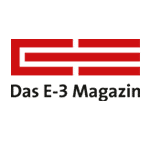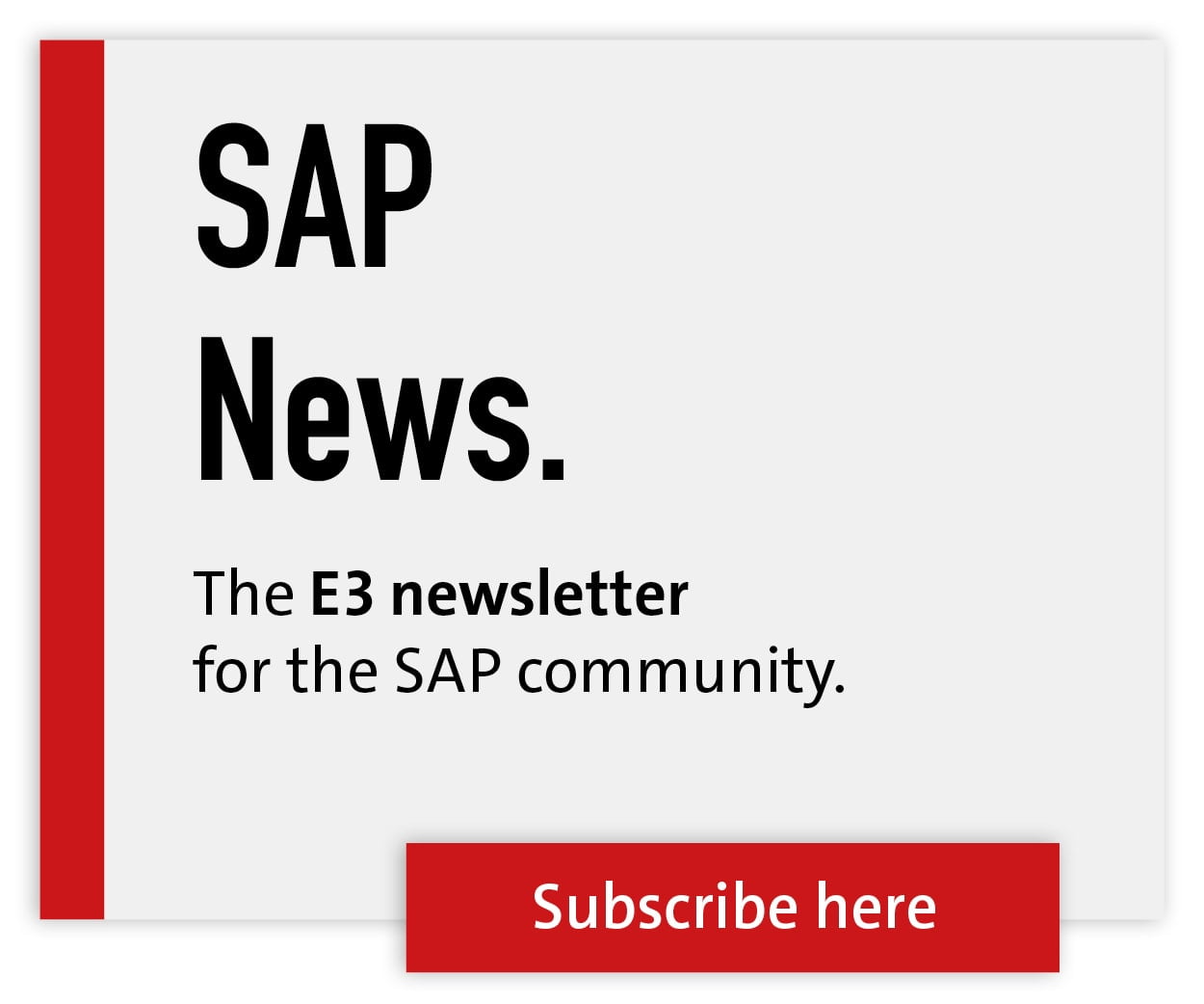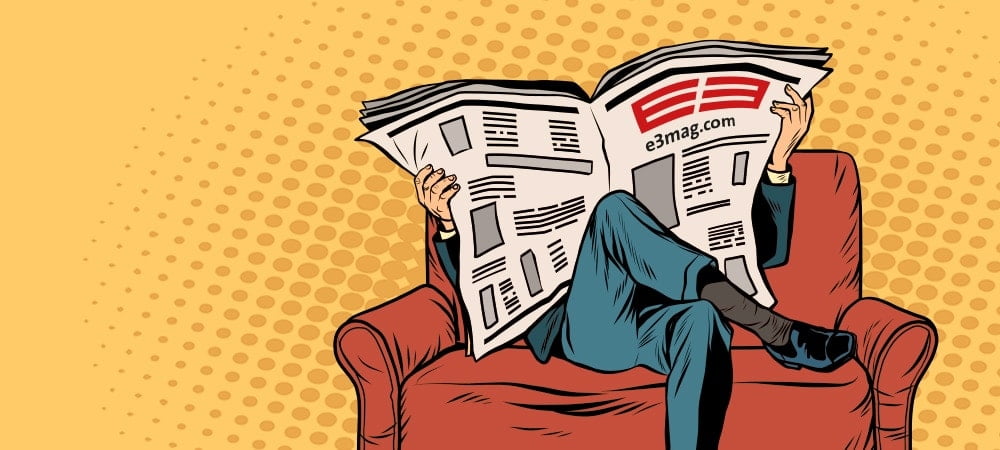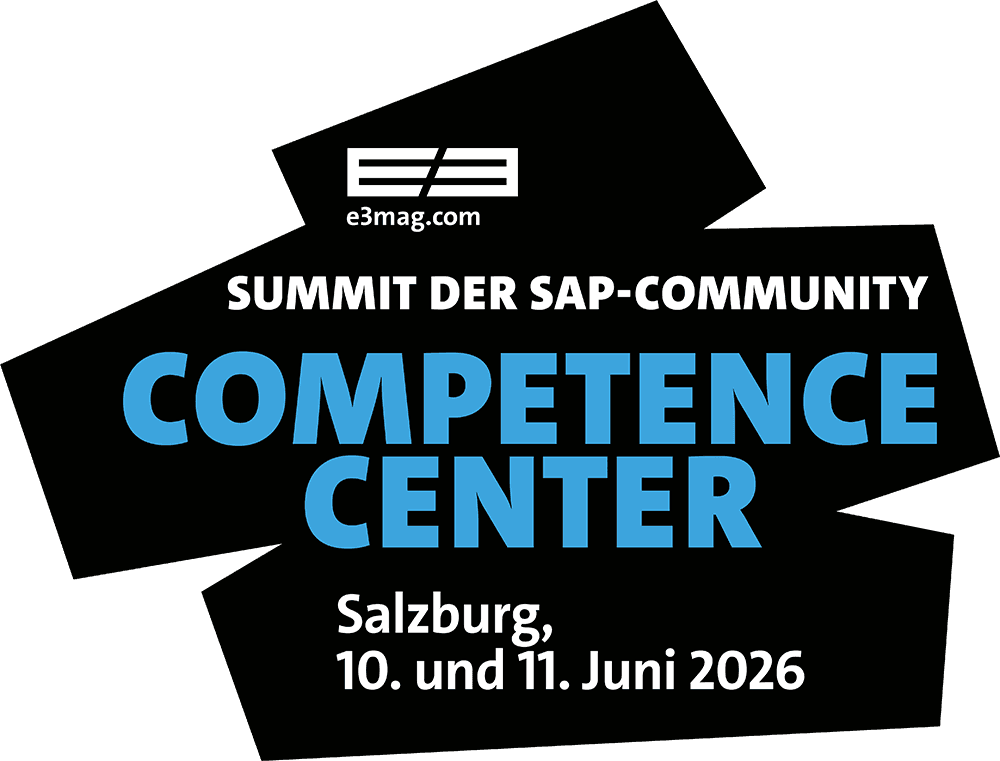Despite suite 7 maintenance extension 2027/2030: brownfield or greenfield?
![[shutterstock.com: 97283357, VLADGRIN]](https://e3mag.com/wp-content/uploads/2020/03/shutterstock_97283357.jpg)

A recently published Lünendonk study shows that only a few existing SAP customers have a concrete roadmap for the transformation of Business Suite 7 to S/4, are already implementing it or have even completed the changeover.
Today's hesitant action would lead to a project backlog by 2025 - the original end of maintenance for ECC 6.0. One of the central questions in the migration to S/4 remains and is the consideration of whether the brownfield approach - i.e. the migration of the existing system and its processes to the new system - or the greenfield approach - the new implementation of the SAP system - should be used.
"Our customers are showing us that they want to move towards the future with SAP S/4 Hana. They expect SAP to make a long-term commitment to this platform"
said Christian Klein, Co-CEO of SAP.
"We know that our customers are carrying out extensive transformation projects. In addition, the German-speaking User Group indicates in its recently published survey that customer investments in S/4 Hana are increasing significantly."
SAP wants to offer complete transparency on maintenance for Business Suite 7 and is extending mainstream maintenance for core applications from ERP/ECC 6.0 for a further two years. During this "phase-out phase", SAP will continue to offer the comprehensive services of standard maintenance.
According to SAP, there will be no contract changes or additional fees. After this phase, SAP will offer existing customers the opportunity to choose how they would like to continue maintenance for core Business Suite 7 applications from 2028.

Existing Suite 7 customers who require support for their applications during longer conversion phases to S/4 can fall back on the proven Extended Maintenance offer.
This is linked to a surcharge of two percentage points on the existing maintenance base and applies to all support offers. Extended Maintenance is available for a further three years from 2028 to 2030.
Existing customers who do not opt for extended maintenance by the end of 2027 but wish to continue their software systems with SAP Business Suite 7 will automatically be switched to Customer Specific Maintenance. This includes the solution of already known problems with unchanged fees.

"All of the announcements are an important and, above all, the right step by SAP. It is an encouraging sign that SAP is listening to its customers and stakeholders"
said Andreas Oczko, Head of Service & Support, German-speaking SAP User Group (DSAG).
"The long-term commitments move the discussion away from time pressure and back to the essentials."
According to Andreas Oczko, this time gained must be used immediately:
"The maintenance commitments for S/4 Hana until at least 2040 and for Business Suite 7 until the end of 2030 are not a license to wait any longer."
In addition to the reduced time pressure due to the end of maintenance, there are nevertheless good and objective reasons for switching to S/4. The Lünendonk study shows that many companies are only gradually starting the implementation.
Even though only three percent of those surveyed stated that they would prefer to wait and rely on an extension of ECC 6.0 maintenance - which has now been implemented - many companies are still in the early planning phases:

52 percent are only conducting preliminary studies and 30 percent are busy developing a concrete roadmap. A meagre ten percent of the companies surveyed have already completed the S/4 transformation.
"More than every second company surveyed, 57 percent, will opt for the brownfield approach and leave the processes largely unchanged according to the current state of planning"
says Mario Zillmann, Partner at Lünendonk and Hossenfelder and author of the study.
The main reasons for the brownfield approach are primarily the continued use and optimization of existing processes and structures (51%). A third are in favor of it due to the faster implementation compared to the greenfield approach. Other reasons include the lower effort and lower costs associated with the brownfield approach.
In contrast, 25 percent of the companies surveyed prefer the greenfield approach. Within the financial services sector, this figure even rises to a third.
Half of the companies state that they have opted for this approach in order to free themselves from legacy issues and build a new system landscape that prepares them for the future.

Furthermore, 25 percent of respondents opted for the new implementation of the ERP system, as this does not restrict current business processes.
"In order not to hinder the core business, the IT processes remain in place and new business and IT processes are being set up in parallel to meet the requirements of digitalization"
adds Mario Zillmann.
The analysis shows that both company-specific and sector-specific requirements are decisive and not the size of the company.
"A key criterion should be whether a company feels it is well positioned for the future with its current process landscape or whether the processes need to be more customer-centric, for example"
Zillmann points out.





